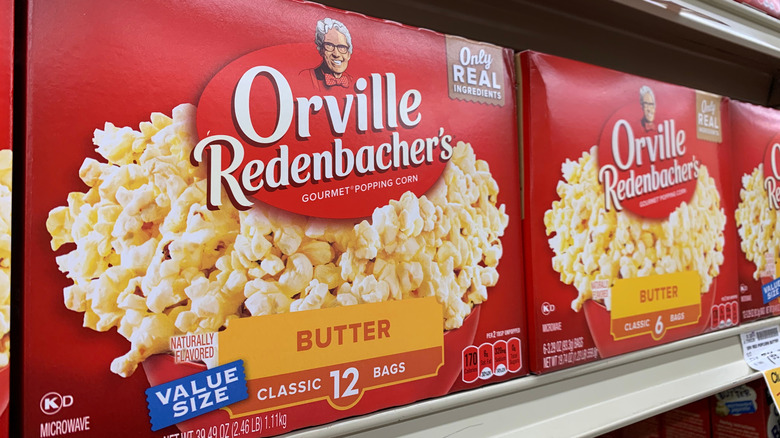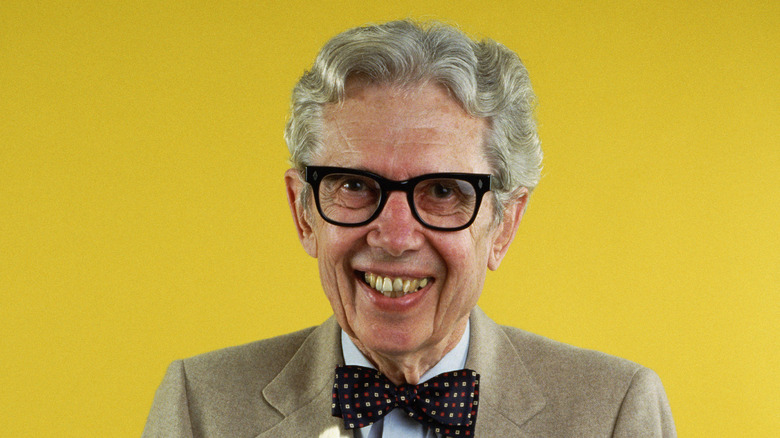Orville Redenbacher's Popcorn Originally Had A Very Different Name
Once a brand name becomes established as a permanent fixture in the consumer lexicon, it's hard to imagine it ever being called something else. Pepsi-Cola was originally called "Brad's Drink," named after its founder Caleb Bradham, before he rebranded to the moniker that persists today. Snapple was once known as Unadulterated Food Products, Inc., a less than snappy appellation that doesn't exactly roll off the tongue (via Best Life).
Orville Redenbacher might be just another funny name if it wasn't indelibly linked to the popcorn that shares the name of its creator. Redenbacher was more than just a visage adorning a popular snack product. In 1951, the real-life Redenbacher, a food scientist and businessman, bought a hybrid corn seed plant in Boone Township, Indiana. That little corn seed would eventually help launch his popcorn empire, per Mental Floss.
In 1965, after extensive experimentation, his factory developed a seed that produced a popcorn hybrid that he envisioned would sell well. Orville Redenbacher's website described it as light and fluffy, achieving a 44:1 ratio in popped to unpopped kernels.
A name that pops
Now that they had perfected their popcorn, Redenbacher and his partner, Charlie Bowman, decided to market it regionally. The original name used was a play off of the partner's surnames, "Red-Bow." It found regional success, and by 1970 the duo had set their sights on reaching a national audience.
They tied their ambitions and fortunes ($13,000 to be exact) to an advertising agency out of Chicago that devised a new branding strategy, according to Mental Floss. The marketing scheme they came up with was using Orville Redenbacher's name and image to promote the brand, probably because it was so unique and the thought was that it would stick in the public's mind. He would feature prominently in advertising campaigns in all his geeky glory.
Redenbacher expressed doubts and worried that he had made an expensive mistake. Instead, his smiling, bespectacled countenance and signature red bow tie resonated with consumers, and the product exploded onto the scene. As related in his New York Times obituary, when Hunt-Wesson bought the company in 1976, they kept Redenbacher on as a spokesman and the face of the brand. He died in 1995, but his legacy endures through his eponymous popcorn, which surveys indicate remains a widely popular brand today. The $13,000 gamble just might have paid off.

